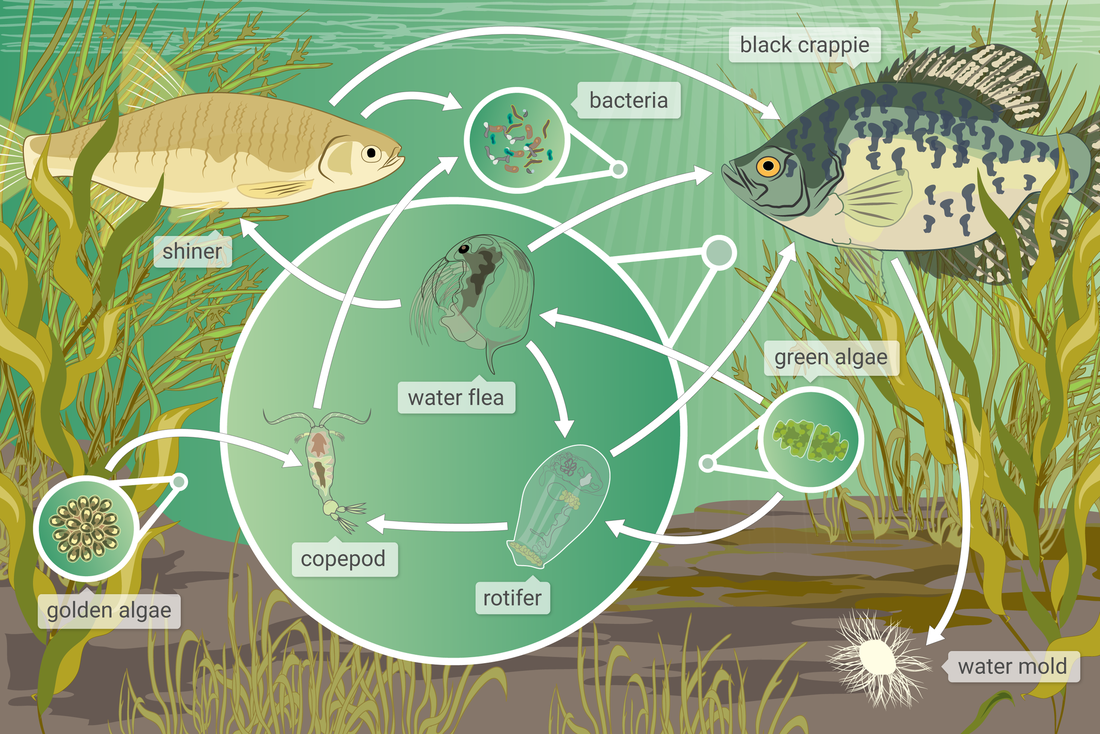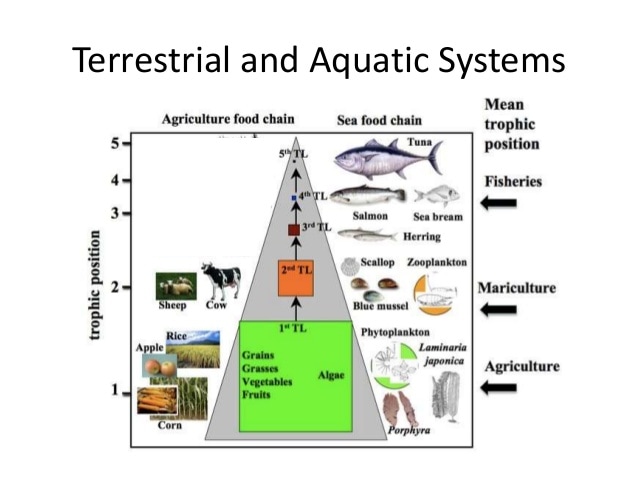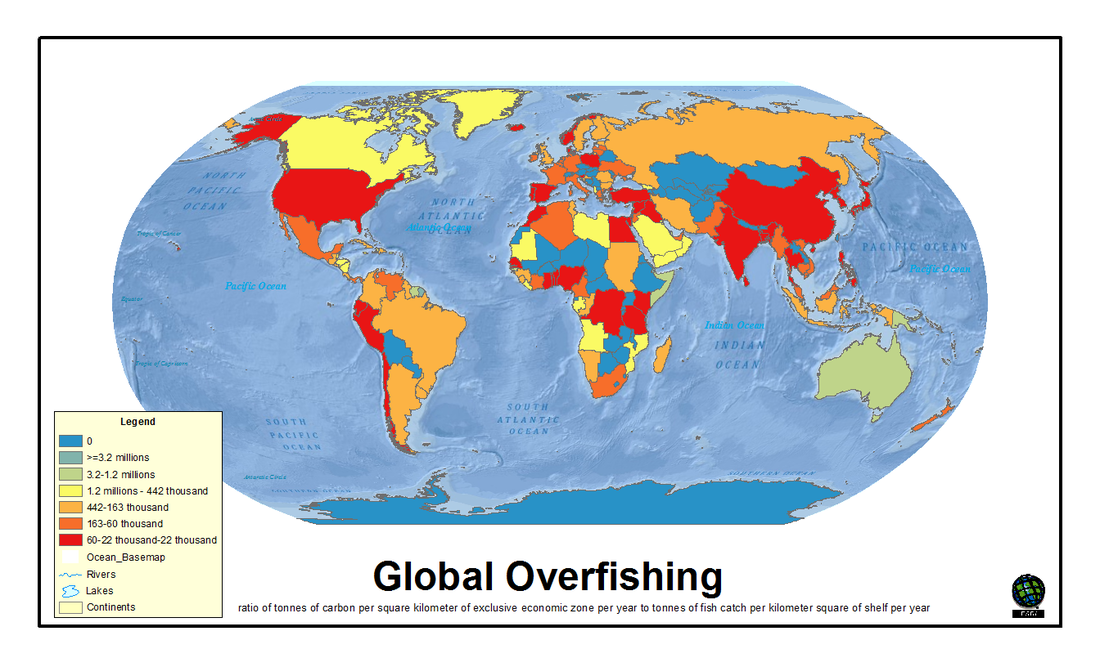4.3: Aquatic Food Production Systems

The demand for aquatic food is increasing dramatically worldwide and at the same time there is a pressure for more efficient production and distribution systems to deliver healthy and safe food also taking into account the environmental and sustainability issues throughout the entire aquatic food value chain.
This unit is a minimum of 4.5 hours.
This unit is a minimum of 4.5 hours.
Significant Ideas:
- Aquatic systems provide a source of food production.
- Unsustainable use of aquatic ecosystems can lead to environmental degradation and collapse of wild fisheries.
- Aquaculture provides potential for increased food production.
Big questions:
- What strengths and weaknesses of the systems approach and the use of models have been revealed through this topic?
- To what extent have the solutions emerging from this topic been directed at preventing environmental impacts, limiting the extent of the environmental impacts, or restoring systems in which environmental impacts have already occurred?:
- How are the issues addressed in this topic of relevance to sustainability or sustainable development?
- In what ways might the solutions explored in this topic alter your predictions for the state of human societies and the biosphere some decades from now?
- How far does a systems approach help our understanding of aquatic food production systems?
- Compare and contrast the environmental impact of capture fisheries and aquaculture
- to what extent can fisheries be manages sustainably?
- Outline the likely pressures on, and potential solutions for the world fisheries in decades to come.
Knowledge & Understanding:
4.4.U1 Demand for aquatic food resources continues to increase as human population grows and diet changes.
[When looking at the increase in demand for food resources, consideration should be given to changes in attitude towards “health foods” and food fashions.]
[When looking at the increase in demand for food resources, consideration should be given to changes in attitude towards “health foods” and food fashions.]
- Explain why demand for fish has increased and continues to grow

Global demands for food from aquatic environments are expected to increase in future decades, because these foods will help to meet the needs and preferences of a growing human population. Median projections suggest global population growth of 2.4 billion, to over 9.7 billion, by 2050. Food demand is expected to rise even faster than population growth, owing to the emergence of a larger proportion of ‘middle-class’ people who have greater spending power and typically consume more animal protein than people with lower incomes
4.4.U2 Photosynthesis by phytoplankton supports a highly diverse range of food webs.
- Outline the different oceanic zones.
- Outline the different zones within a lake ecosystem.
- Construct food chains and webs within aquatic ecosystems

The most abundant life forms in the ocean are plankton; most are so small that you can't even see them. The first link in all marine food chains are the phytoplankton, or 'plant' plankton, which use sunlight to make sugars from carbon dioxide and water (photosynthesis). Because they need sunlight, they can only live in the photic zone. Through photosynthesis, phytoplankton make food for themselves and give off oxygen, which is a waste product for them but essential for all animals on Earth. Phytoplankton produce all the food at the bottom of the ocean food chain, so they are called primary producers. Most of the photosynthesis on Earth happens in the oceans and phytoplankton produce a large share of the oxygen in the air we breathe
4.4.U3 Aquatic (freshwater and marine) flora and fauna are harvested by humans.
[Wild fisheries are also known as “capture fisheries”]
[Wild fisheries are also known as “capture fisheries”]
- State a range of food resources available from aquatic ecosystems.
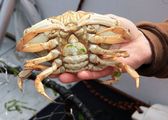
Sustainable fishing guarantees there will be populations of ocean and freshwater wildlife for the future. Aquatic environments are home to countless species of fish and invertebrates, most of which are consumed as food. (Others are harvested for economic reasons, such as oysters that produce pearls used in jewelry.) Seafood is respected all over the world, in many diverse cultures, as an important source of protein and healthy fats. For thousands of years, people have fished to feed families and local communities.
4.4.U4 The highest rates of productivity are found near coastlines or in shallow seas, where upwellings and nutrient enrichment of surface waters occurs.
- Describe factors which effect primary production within aquatic ecosystems.
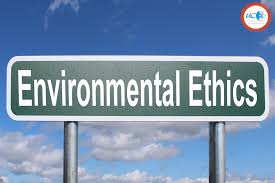
Boundary ecosystems are characterized by the presence of large plants. In the open water of the ocean and large lakes the basic production of living material (primary production) is carried out by microscopic algae (phytoplankton) floating freely in the water. At the bottom there is not enough light to allow growth of large, attached plants. In boundary ecosystems much of the area is shallow enough for light to reach the bottom and permit large plants to grow. Phytoplankton is also present, but the large plants give the boundary systems their special character
4.4.U5 Harvesting some species, such as seals and whales, can be controversial.
- Discuss with reference to a named animal why harvesting of some species is considered controversial.

The relationship between humans a marine mammals is a special, but sometimes controversial one. It is culturally diverse and politically influential and is based on attitudes ranging from spiritual reverence to fondness of taste. Our relationship with whales and seals in particular have profoundly influenced recent human history.
4.4.U6 Ethical issues arise over biorights, rights of indigenous cultures and international conservation legislation.
- Discuss with reference to a named example the ethical issues of biorights
- Discuss with reference to a named example the rights of indigenous cultures
- Identify the conflicts of international conservation legislation.
 image from www.fao.org
image from www.fao.org
The principal ethical issues in fisheries relate broadly to human and ecosystem well-being. The most important ones being poverty; the right to food; legislation and overfishing and ecosystem degradation.
Fisheries constitute an important source of livelihood for millions of people. Nearly 35 million fishers are directly engaged in fishing and fish farming as a full-time or part-time occupation (FAO, 2002). Fishers are particularly concentrated in developing countries, where about 95 percent of the world's fishers live.
The state of world fisheries presents us with pressing ecological, economic, social and political challenges with significant ethical implications. For example, the depletion of a nation's fishery resources represents a moral failure by society to maintain the natural environment and its productivity. It compromises food security, threatening vulnerable communities in particular, and reduces the livelihood opportunities of future generations. The contamination, by pollution, of an otherwise extremely healthy source of food, reducing food safety and threatening human health, is another indication of moral failure in relation to both present and future generations.
Fisheries constitute an important source of livelihood for millions of people. Nearly 35 million fishers are directly engaged in fishing and fish farming as a full-time or part-time occupation (FAO, 2002). Fishers are particularly concentrated in developing countries, where about 95 percent of the world's fishers live.
The state of world fisheries presents us with pressing ecological, economic, social and political challenges with significant ethical implications. For example, the depletion of a nation's fishery resources represents a moral failure by society to maintain the natural environment and its productivity. It compromises food security, threatening vulnerable communities in particular, and reduces the livelihood opportunities of future generations. The contamination, by pollution, of an otherwise extremely healthy source of food, reducing food safety and threatening human health, is another indication of moral failure in relation to both present and future generations.
4.4.U6 Developments in fishing equipment and changes to fishing methods have lead to dwindling fish stocks and damage to habitats.
[Consider how two contrasting fisheries have been managed and relate to the concept of sustainability; for example, cod fisheries in Newfoundland and Iceland. Issues that should be covered include: improvements to boats, fishing gear (trawler bags), and detection of fisheries and boats via satellites. Management aspects should include; use of quotas, designation of marine protected areas (exclusion zones), and restriction on types and size of fishing gear (including mesh size of nets).]
[Consider how two contrasting fisheries have been managed and relate to the concept of sustainability; for example, cod fisheries in Newfoundland and Iceland. Issues that should be covered include: improvements to boats, fishing gear (trawler bags), and detection of fisheries and boats via satellites. Management aspects should include; use of quotas, designation of marine protected areas (exclusion zones), and restriction on types and size of fishing gear (including mesh size of nets).]
- Compare and contrast management of two capture fisheries
 image from NOAA.
image from NOAA.
In the past, fishing was more sustainable because fishermen did not have the resources or the technology to tread into the deeper waters at far flung locations. Their vessels were small with limited capacities for stocking fish and the absence of technology like sonar restricted their fish-hunting activities. The United Nations Food and Agriculture Organisation (FAO) estimates that 91.1% of the world’s fisheries are either fully exploited or overexploited. With the introduction of modern industrial fishing techniques the industry has reached a crushing over-capacity that has already decimated a vast range of global fish populations. Today, however, fishing is a multimillion dollar industry with well-equipped ships and hi-tech facilities that enable fishermen to explore new shores and deeper waters to keep up with the increasing demand for seafood.
Once a fish stock is over-fished to the point of collapse, it is very difficult for it to recover.
Once a fish stock is over-fished to the point of collapse, it is very difficult for it to recover.
4.4.U7 Unsustainable exploitation of aquatic systems can be mitigated at a variety of levels (international, national, local and individual) through policy, legislation and changes in consumer behaviour.
- Explain with reference to a case study, why unsustainable fishing has occurred in some areas.
 image from www.ocean-law.org
image from www.ocean-law.org
There are many international agreements in place, however. There are 17 Regional Fisheries Management Organizations (RFMOs), composed of nations that share economic interests in a particular area. When member nations agree to RFMO regulations, they are bound by these rules, which may include catch limits and specifications on the types of gear used. Evidence suggests these regulations have led to decreased bycatch (such as dolphins in tuna nets), but maintaining healthy fish stocks has remained a challenge. Enforcing fishing regulations on the high seas is extremely difficult, but member nations have worked to address the problem of illegal fishing and prevent illegally caught seafood from being imported.
One organization that has demonstrated enforcement success is the North Pacific Anadromous Fish Commission (NPAFC), which exists primarily to preserve salmon stocks. Member nations are Canada, Japan, South Korea, Russia, and the United States. The commission prohibits catching salmon on the high seas, which is primarily accomplished using drift nets. Drift nets float freely in ocean currents, usually near the sea’s surface. They are used to catch schooling fish like salmon and sardines. Unfortunately, these nets result in a lot of bycatch, ensnaring seabirds, marine mammals, and other non-targeted species.
One organization that has demonstrated enforcement success is the North Pacific Anadromous Fish Commission (NPAFC), which exists primarily to preserve salmon stocks. Member nations are Canada, Japan, South Korea, Russia, and the United States. The commission prohibits catching salmon on the high seas, which is primarily accomplished using drift nets. Drift nets float freely in ocean currents, usually near the sea’s surface. They are used to catch schooling fish like salmon and sardines. Unfortunately, these nets result in a lot of bycatch, ensnaring seabirds, marine mammals, and other non-targeted species.
4.4.U8 Aquaculture has grown to provide additional food resources and support economic development and is expected to continue to rise.[Aquaculture is the farming of aquatic organisms in both coastal and inland areas that involves intervention in the rearing process to enhance production.]
- Distinguish between open and semi-closed aquaculture systems.
- Distinguish between capture fisheries and aquaculture.
 image from www.bq-magazine.com
image from www.bq-magazine.com
Aquaculture is the farming, breeding, rearing, and harvesting of plants and animals in all types of water environments including ponds, rivers, lakes, and the ocean. Aquaculture produces all sorts of fish, shellfish, and seaweeds including food fish, sport fish, bait fish, ornamental fish, crustaceans, mollusks, algae, sea vegetables, and fish eggs. Aquaculture also includes the production of fish and shellfish released into the wild to rebuild wild populations.
Approximately half the seafood eaten worldwide is farm-raised. Because harvest from wild fisheries has peaked globally, aquaculture is widely recognized as a necessary way to meet the seafood demands of a growing population. As a result, aquaculture is the fastest growing form of food production in the world.
Approximately half the seafood eaten worldwide is farm-raised. Because harvest from wild fisheries has peaked globally, aquaculture is widely recognized as a necessary way to meet the seafood demands of a growing population. As a result, aquaculture is the fastest growing form of food production in the world.
4.3 U9 Issues around aquaculture include: loss of habitats, pollution (with feed, antifouling agents, antibiotics and other medicines added to fish pens), spread of diseases and escaped species (some involving genetically modified organisms).
- Explain the environmental impacts of aquaculture.
 image from www.seafoodwatch.org
image from www.seafoodwatch.org
Like any form of industrial production, aquaculture has environmental impacts. The major impacts for the aquaculture industry include: using more fish than they produce, disease and parasite transfer, the introduction and spread of exotic species, chemical pollution, habitat destruction for farm siting or due to farm activities, and the killing of predators that prey on the farmed species.
Social impacts are also considered to be a major impact of aquaculture production and there are numerous conflicts around the world. The major conflicts include: traditional livelihood and community displacement and abusive labor practices. In some cases in the impacts have been extreme and people have ended up being killed in the conflicts. Social impacts are mainly driven by export driven commodity production like shrimp, where companies seek to maximize profits by exploiting poor countries who have poor regulations.
Social impacts are also considered to be a major impact of aquaculture production and there are numerous conflicts around the world. The major conflicts include: traditional livelihood and community displacement and abusive labor practices. In some cases in the impacts have been extreme and people have ended up being killed in the conflicts. Social impacts are mainly driven by export driven commodity production like shrimp, where companies seek to maximize profits by exploiting poor countries who have poor regulations.
Applications and skills:
4.3.A1 Discuss, with reference to a case study, the controversial harvesting of a named species.
[Examine different points of view regarding harvesting of a controversial species; for example, the historical Inuit tradition of whaling versus modern international conventions.]
[Examine different points of view regarding harvesting of a controversial species; for example, the historical Inuit tradition of whaling versus modern international conventions.]
 image from motherboard.vice.com
image from motherboard.vice.com
The whaling controversy is the international environmental and ethical debate over whale hunting. The debate has focused on issues of sustainability and conservation as well as ownership and national sovereignty.
4.3.A2 Evaluate strategies that can be used to avoid unsustainable fishing.
[ Students should understand maximum sustainable yield (MSY) as applied to fish stocks.]
[ Students should understand maximum sustainable yield (MSY) as applied to fish stocks.]
 image from howtoconserve.org
image from howtoconserve.org
The central strategy is to protect and restore marine fisheries, which in turn support fishing livelihoods and supply meals to millions of people around the world.
Depending on the fishery, strategies can:
Depending on the fishery, strategies can:
- Increase the estimated biomass of severely distressed stocks.
- Prevent further declines in and/or increase the biomass of stocks facing moderate distress.
- Reduce bycatch of non-target species or juvenile age cohorts of target stocks.
- Where possible and relevant, protect and restore critical marine habitat such as mangroves and coral reefs.
4.3.A3 Explain the potential value of aquaculture for providing food for future generations.

About 567 aquatic species are currently farmed all over the world, representing a wealth of genetic diversity both within and among species. Aquaculture is practiced by both some of the poorest farmers in developing countries and by multinational companies. Eating fish is part of the cultural tradition of many people and in terms of health benefits, it has an excellent nutritional profile. It is a good source of protein, fatty acids, vitamins, minerals and essential micronutrients. Aquatic plants such as seaweed are also an important resource for aquaculture as they provide nutrition, livelihood and other important industrial uses.
Eighty percent of current aquaculture production is derived from animals low in the food chain such as herbivorous, omnivorous fish and mollusks.
Eighty percent of current aquaculture production is derived from animals low in the food chain such as herbivorous, omnivorous fish and mollusks.
4.3.A4 Discuss a case study that demonstrates the impact of aquaculture.
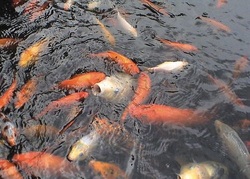
Depletion and Salinization of Potable Water; Salinization of Agricultural Land: Pumping of groundwater to supply freshwater to shrimp farms has resulted in depletion and, sometimes, salinization of local water supplies, causing water shortages for coastal communities. There have also been many reports of crop losses after agricultural land has become salinized by effluent water pumped out from shrimp farms onto land.
Human Rights Abuses: There has been large scale displacement of families to make way for shrimp farms in some developing countries, contributing to landlessness and food insecurity. Non-violent protests against the industry have frequently been met with threats, intimidation and violence. Protesters have been murdered in at least 11 countries, including an estimated 150 people in Bangladesh alone.
Human Rights Abuses: There has been large scale displacement of families to make way for shrimp farms in some developing countries, contributing to landlessness and food insecurity. Non-violent protests against the industry have frequently been met with threats, intimidation and violence. Protesters have been murdered in at least 11 countries, including an estimated 150 people in Bangladesh alone.
Key Words
|
carrying capacity
ammonia nitrogenous wastes spawning wild fish fish stock SOFIA International Court of Justice Tragedy of Commons estuaries upwelling blast fishing |
suspended solids
fisheries urea game fish sustainability FIP polyculture aquaculture lagoons zooplankton dredging UNCLOS |
overfishing
cage culture phytoplankton turbidity ornamental fish maximum sustainable yield Marine Stewardship Council GMOs intertidal zones coral reef gillnets RFMOs |
aeration
dissolved oxygen raceway hatchery fisheries UNFAO total allowable catches biorights mangroves continental shelf trawling NPAFC |
Classroom Material
Comparing Fisheries Case Study
Controversial Aquatic Harvesting Case Study
Unsustainable Fish farming Case Study
Tragedy of the Commons Activity
Case Studies
List of Case Studies on Specific Fish Species
Fish diversity and fish consumption in Bangladesh
Salmon, Blue Fin Tuna & Shrimp Aquafarming
Aquaculture Stewardship Council Case Studies
lRice and Fish Farming
Collapse of the Grand Banks
Comparing Fisheries Case Study
Controversial Aquatic Harvesting Case Study
Unsustainable Fish farming Case Study
Tragedy of the Commons Activity
Case Studies
- One detailed case study of the controversial harvesting of a named species (eg. whales and Inuit hunting)
- One detailed case study of unsustainable fishing and associated fishery management strategies (eg. Bluefin Tuna)
- One detailed case study of the impacts of aquaculture (eg. shrimp farming in Thailand)
List of Case Studies on Specific Fish Species
Fish diversity and fish consumption in Bangladesh
Salmon, Blue Fin Tuna & Shrimp Aquafarming
Aquaculture Stewardship Council Case Studies
lRice and Fish Farming
Collapse of the Grand Banks
Powerpoint and Notes Adapted from Brad Kremer, P Brooks and Ms. McCrindle
Your browser does not support viewing this document. Click here to download the document.
Your browser does not support viewing this document. Click here to download the document.
Correct use of terminology is a key skill in ESS. It is essential to use key terms correctly when communicating your understanding, particularly in assessments. Use the quizlet flashcards or other tools such as learn, scatter, space race, speller and test to help you master the vocabulary.
Useful Information
Good Fish Guide
Monterey Bay Aquarium: Seafood Watch
National Geographic Environment: The Ocean—The Impact of Seafood
National Geographic Environment: The Ocean—Photo Gallery: Overfishing
National Geographic Ocean: Seafood Quiz
In the News
The government wants more offshore fish farms, but no one is biting - The Guardian-Sep 25, 2016
Tanzania: Abdul - Man Who Earns a Living Through Fish Farming - AllAfrica.com-Sep 27, 2016
Armenia's Breadbasket Risks Desertification - Institute for War and Peace Reporting
International-mindedness:
- Successful management of marine and some freshwater fisheries requires partnership between different nations.
Theory of knowledge:
- The Inuit people have a historical tradition of whaling—to what extent does our culture determine or shape our ethical judgments?
Videos
n this The Daily Eco video we explain its CHARACTERISTICS and what TYPES of AQUATIC ECOSYSTEMS exist: SALTWATER ECOSYSTEMS and FRESHWATER ECOSYSTEMS.
What Are The Sea Zones?
The program then examines the littoral, limnetic and profundal zones of freshwater lakes, the seasonal cycling of O2 and nutrients, and the difference between oligotrophic and eutrophic lakes before observing how life changes along the course of rivers and explaining the ecological importance of wetlands. The photic, aphotic, and benthic ocean zones are then described and marine habitats such as tide pools, kelp forests, coral reefs, and vent communities explored.
Despite its crucial importance for the survival of humanity, marine biodiversity is in ever-greater danger, with the depletion of fisheries among biggest concerns.
Created as a student film project, Troubled Waters explores what has happened to our oceans because of our appetite for seafood, and looks what we can do personally to kick start a reformed fishing industry.
Based on reporting, the ocean has long appeared to offer an infinite bounty of fish. But recent, more accurate research paints a far grimmer picture, with annual catch on a precipitous and potentially catastrophic decline.
The way we fish for popular seafood such as salmon, tuna and shrimp is threatening to ruin our oceans. Paul Greenberg explores the sheer size and irrationality of the seafood economy, and suggests a few specific ways we can change it, to benefit both the natural world and the people who depend on fishing for their livelihoods.
The tragedy of the commons model describes what happens in that open access system. But not what happens when a common property regime is in place. But the term "commons" doesn't distinguish between the two.
In 1992, one of the largest stocks of fish in the world, fished for over 500 years, went almost extinct and to this day have not returned in commercially viable levels. What is it specifically that create tragedies like this? How have other countries avoided overfishing?
The Inupiat of the high Arctic call the ocean their "garden" and they view its greatest harvest as the Bowhead whale.
They believe that the whales give themselves so that the hunters can feed their families
They believe that the whales give themselves so that the hunters can feed their families
Sperm Whale Hunt
The United Nations says 90% of the world's fisheries have collapsed, and the Chinese are the biggest culprits.
By a long way, China has the world's largest deep sea fishing fleet including 2,600 mega trawlers stripping the ocean floor. They're helping satisfy China's insatiable appetite for seafood. The Chinese eat more than a third of the world's fish supplies.
By a long way, China has the world's largest deep sea fishing fleet including 2,600 mega trawlers stripping the ocean floor. They're helping satisfy China's insatiable appetite for seafood. The Chinese eat more than a third of the world's fish supplies.
Changing Seas travels from coast to coast, meeting with experts who raise fish for food production and to replenish depleted wild populations. Learn how scientists are making it possible to grow marine fish miles away from shore, and discover which Florida research facilities are testing new methods for making aquaculture more environmentally sustainable and efficient. Also visit Cedar Key, Florida, where aquaculture has helped to preserve the area's rich fishing heritage. Here, former gillnet fishermen turned clam-farmers harvest their product with little impact to the local ecosystems



